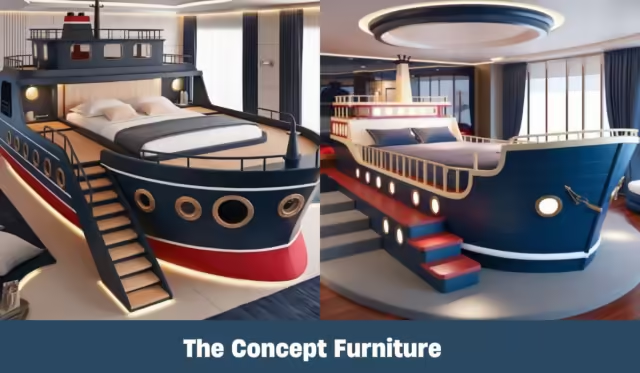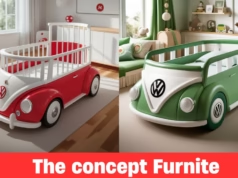When we think of cargo ships, our minds often drift toward vast containers and sprawling decks filled with various goods awaiting delivery. However, a crucial component of any cargo vessel that is frequently overlooked is the cargo ship beds—the very foundation that supports, secures, and optimizes the transportation of goods across oceans. This article delves deep into the world of cargo ship beds, exploring their designs, materials, innovations, and significance in maritime operations.
Introduction to Cargo Ship Beds
The concept of cargo ship beds is pivotal in the shipping industry, providing essential support and security for the cargo being transported. These beds are not mere platforms; they have evolved over time to meet the increasing demands of global trade and environmental regulations.
Understanding the fundamental definition and purpose of cargo ship beds sets the stage for appreciating their importance in maritime logistics.
Definition and Purpose of Cargo Ship Beds
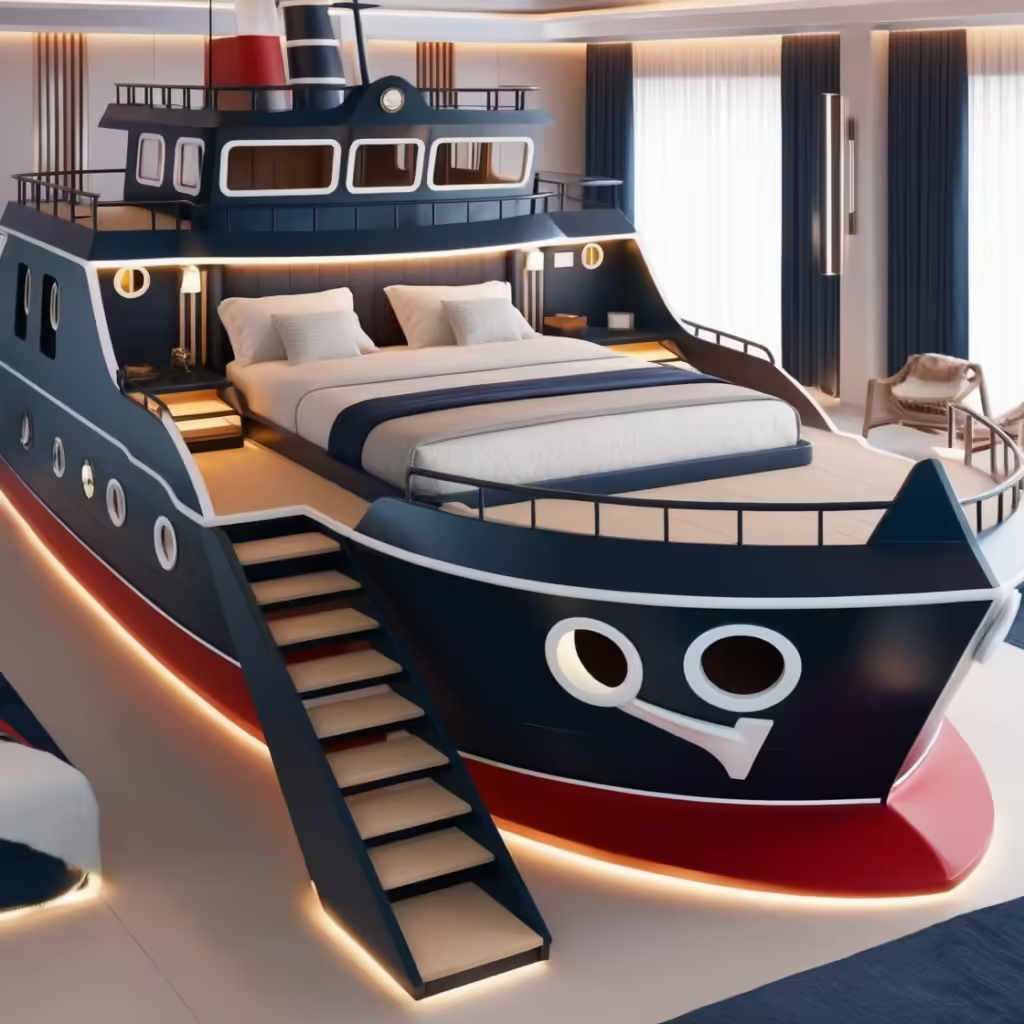
At its core, a cargo ship bed refers to the structure on which cargo is secured during transport. It serves multiple purposes, including:
- Providing stability and support for various types of cargo.
- Facilitating efficient loading and unloading processes by ensuring easy access to goods.
- Minimizing damage to cargo through secure fastening that prevents shifting during transit.
The design of cargo ship beds has transformed from rudimentary structures to sophisticated systems that embrace modern technology and materials, ensuring both safety and efficiency in maritime transportation.
Importance in Maritime Operations
Cargo ship beds play an integral role in overall shipping efficiency. The careful planning and design involved in creating cargo beds can significantly impact the operational capabilities of a shipping company. A well-designed cargo bed allows for optimal space utilization, enabling vessels to carry more goods while adhering to weight restrictions and safety regulations.
Additionally, effective cargo bed systems contribute to the timely delivery of goods, which is paramount in international trade. By facilitating quick loading and unloading procedures, these beds minimize port congestion, enhance turnaround times, and ultimately lead to cost savings for shipping companies.
Types of Cargo Ship Beds
The diversity in cargo ship beds is remarkable, as different types serve unique purposes based on the nature of the cargo being transported. Each design is tailored to address specific challenges presented by varying loads, shapes, and sizes.
Standard Cargo Bed Designs
Standard cargo beds are the backbone of most shipping operations. Typically made from durable materials like steel or aluminum, these beds are designed to accommodate a range of cargo types, including containers, bulk, and breakbulk items.
Innovative engineering approaches have led to the development of versatile bed designs that can be easily modified or adjusted based on cargo requirements. This flexibility is crucial in today’s shipping landscape, where cargo specifications can change frequently.
Adjustable Cargo Beds

Adjustable cargo beds take versatility a step further. These beds can be raised, lowered, or extended to cater to different cargo heights and weights.
The ability to adjust beds on-the-fly provides shipping companies with greater adaptability, allowing them to handle diverse loads without needing specialized equipment for each shipment. This reduces operational costs and enhances overall efficiency, making adjustable cargo beds an attractive option for modern shipping fleets.
Specialty Beds for Unique Cargo
In addition to standard and adjustable designs, specialty beds are engineered for unique cargo types that require specific handling or conditions. This category includes beds tailored for vehicles, fragile items, or temperature-sensitive goods.
For instance, a climate-controlled cargo bed may be necessary when transporting perishable food items. These specialized beds ensure that specific cargo remains preserved throughout the journey, thus maintaining quality and safety standards.
Materials Used in Cargo Ship Beds
The choice of material plays a crucial role in the performance and durability of cargo ship beds. Different materials offer varying benefits, impacting factors like load capacity, maintenance, and resistance to corrosion.
Wood vs. Metal
Historically, wood was a popular choice for cargo beds due to its natural availability and ease of use. However, advancements in metalworking have shifted the preference toward metal bed designs, primarily because metals such as steel and aluminum provide superior strength and longevity.
Metal cargo beds can withstand harsh ocean environments, resist corrosion, and endure heavy loads without compromising structural integrity. Furthermore, modern coatings and treatments have enhanced the longevity of metal beds, reducing maintenance needs over time.
Composite Materials

As the shipping industry evolves, composite materials are gaining traction in the design of cargo ship beds. Composites combine the strengths of various materials, resulting in lightweight yet sturdy solutions that can reduce fuel consumption while maximizing payloads.
These innovative materials often provide better resistance to environmental factors such as saltwater and humidity, thus extending the lifespan of cargo beds. Their use signifies a shift towards more sustainable practices within the maritime sector.
Durability and Maintenance Considerations
Durability is paramount when choosing materials for cargo ship beds. Factors such as exposure to sea air, moisture, and heavy loads must be considered to prevent premature wear and tear.
Regular maintenance is essential to ensure the longevity of cargo beds. Shipping companies must establish routine inspection protocols to identify potential issues early on. This proactive approach minimizes repair costs and ensures cargo safety during transit.
Design Principles of Cargo Ship Beds
Effective cargo ship bed design is a complex process that balances numerous factors, including load-bearing capacity, spatial considerations, and safety features. Each element contributes to the overall effectiveness of cargo transport.
Structural Integrity and Load-Bearing Capacity
The primary function of cargo ship beds is to support heavy loads securely. Therefore, engineers must prioritize structural integrity in the design process.
Using advanced modeling techniques, designers can test various configurations and materials to determine optimal load-bearing capacities. This analysis ensures that cargo beds can safely support specified weights without risking deformation or failure during voyages.
Space Optimization Techniques
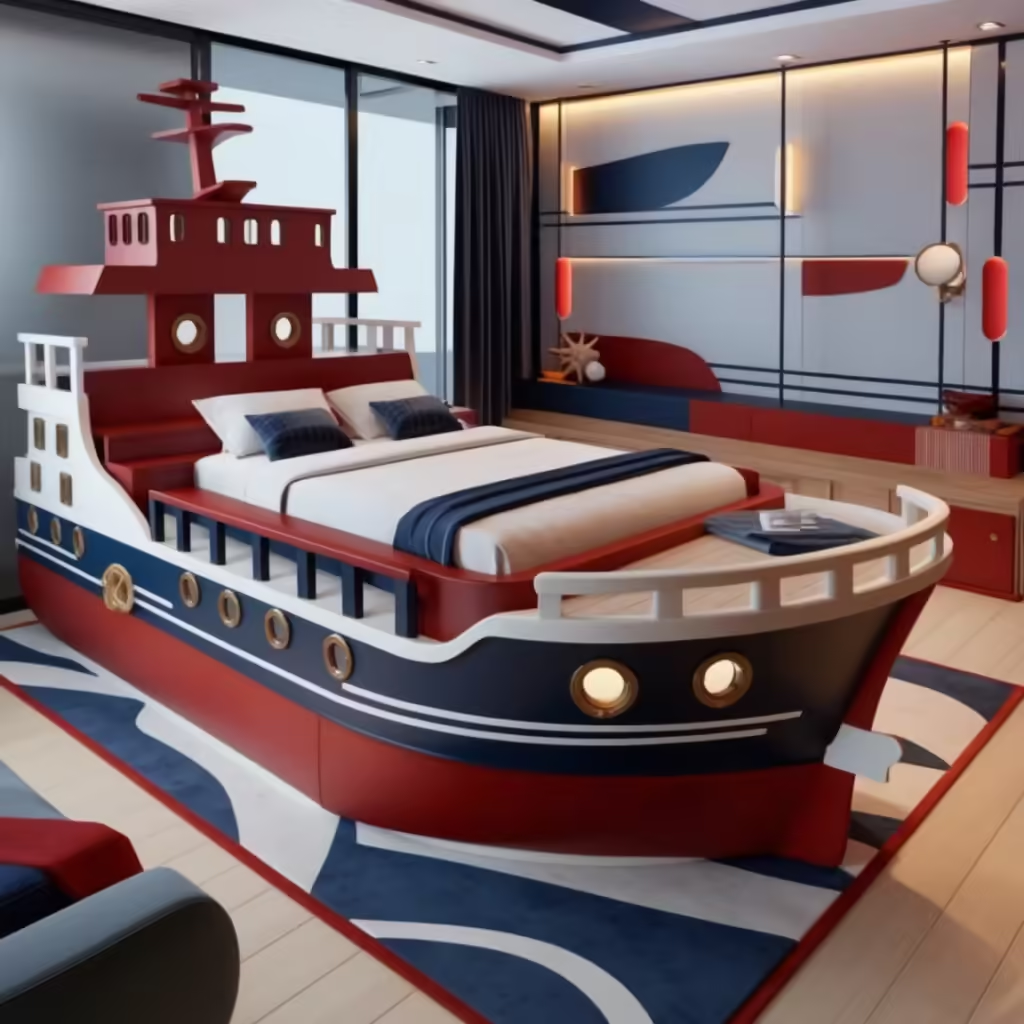
In maritime operations, space is a precious commodity. Maximizing available space on cargo ships can lead to increased profitability and efficiency.
Designers employ various strategies to optimize space utilization, such as modular bed systems that allow multiple cargo configurations. Additionally, curved or angled designs can help fit odd-shaped cargo, enhancing loading efficiency and minimizing wasted space.
Safety Features and Regulations
Safety is non-negotiable in maritime operations. Cargo ship bed designs must comply with stringent safety regulations to protect both cargo and crew members.
Features such as secure fastening systems, anti-slip surfaces, and shock-absorbent materials enhance safety during transit. Compliance with international maritime safety regulations ensures that cargo ship beds meet industry standards, safeguarding lives and property alike.
Manufacturing Processes for Cargo Ship Beds
The manufacturing of cargo ship beds involves several stages, from initial design to final assembly. Each phase presents opportunities for innovation and quality enhancement.
Design and Prototyping
Developing cargo ship beds begins with meticulous design work. Engineers and designers collaborate to create blueprints that outline dimensions, materials, and structural components.
Prototyping follows, allowing manufacturers to create physical models of the beds. This stage is critical for evaluating designs in real-world scenarios and making adjustments before full-scale production begins.
Assembly Techniques
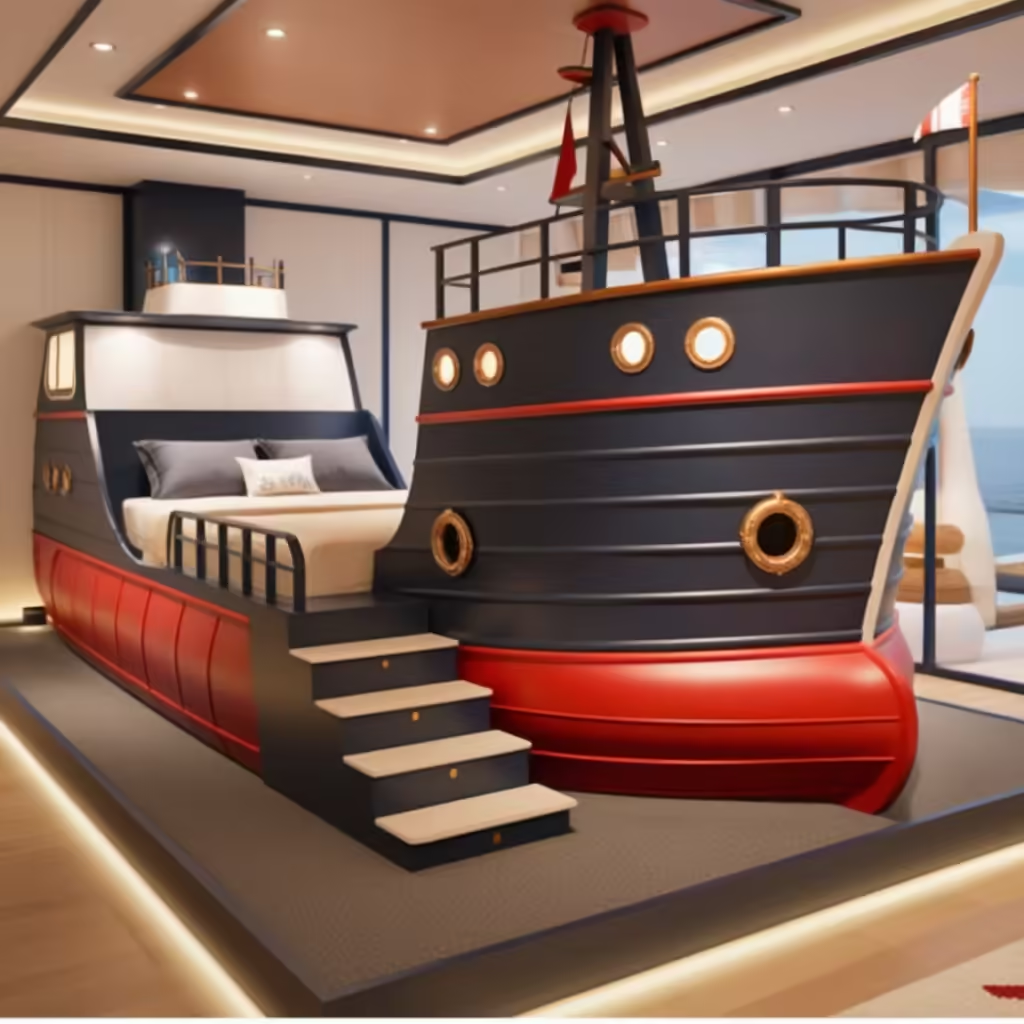
Once designs are finalized, assembly techniques come into play. Advanced welding methods, robotic automation, and precision machining ensure accuracy and consistency in production.
Efficient assembly processes also minimize labor costs and production time, enabling manufacturers to meet growing demand without sacrificing quality.
Quality Control Measures
Quality is paramount in the manufacturing of cargo ship beds. Rigorous quality control measures are implemented throughout the production cycle to guarantee that products meet safety and performance standards.
Testing for load capacity, durability, and resistance to environmental factors is conducted to ensure reliability in actual maritime conditions. Such thoroughness establishes trust among shipping companies regarding the integrity of supplied cargo beds.
The Role of Cargo Ship Beds in Shipping Efficiency
In the competitive world of shipping, efficiency is key to success. Cargo ship beds play a critical role in optimizing operational workflows, directly influencing productivity and cost-effectiveness.
Maximizing Space Utilization
As the saying goes, “Every inch counts.” Efficient space utilization is essential for maximizing cargo loads and minimizing operational costs.
Cargo ship beds designed for flexibility and configurability allow for creative solutions when loading cargo. Customizable configurations enable shippers to adapt quickly to changing cargo needs, thereby elevating overall efficiency.
Facilitating Quick Loading and Unloading
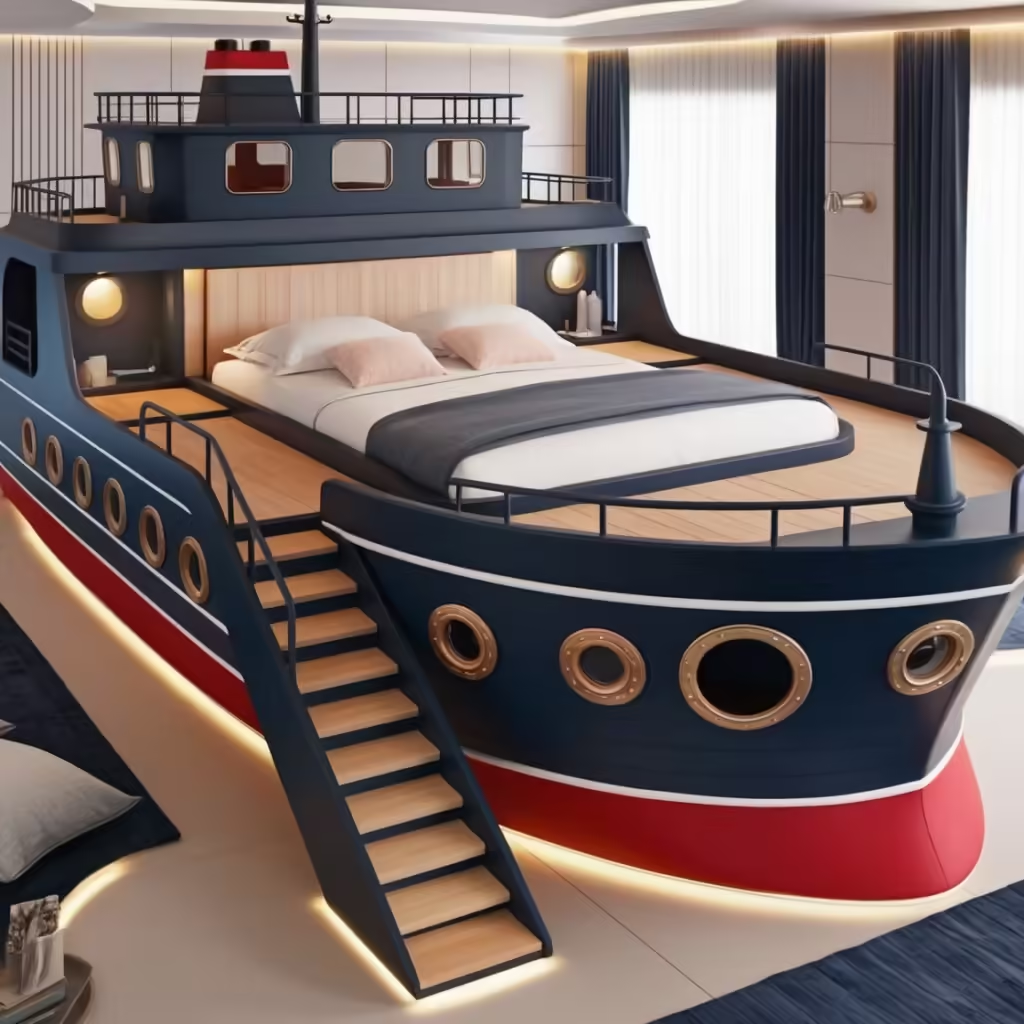
Timely loading and unloading of cargo is vital for maintaining schedules and preventing delays. Well-designed cargo ship beds streamline these processes, enabling dock workers to load and unload efficiently.
Implementing features such as integrated ramps, ergonomic lifting mechanisms, and easy-access designs reduces worker strain while expediting operations, ensuring that vessels remain on schedule.
Minimizing Damage During Transit
Transporting cargo across oceans presents inherent risks, such as shifting loads and environmental impacts. Effective cargo ship beds mitigate these risks through secure fastening mechanisms and strategic bed designs.
By minimizing movement during transit, shipping companies can avoid costly damages and maintain the quality of goods being transported. This reliability fosters customer trust and loyalty, enhancing a company’s reputation in the market.
Innovations in Cargo Ship Bed Technology
Technology continues to reshape the maritime industry, leading to innovative developments in cargo ship bed systems. Embracing these advancements paves the way for increased performance and sustainability.
Smart Beds with Sensor Technology
The advent of smart technology has reached cargo ship beds, paving the way for enhanced monitoring and management. Integrating sensors into bed designs allows for real-time tracking of load conditions and environmental factors.
Data collected can inform operators about potential overloads, structural issues, or changes in cargo conditions, facilitating preemptive actions that prevent accidents or damages.
Environmentally Friendly Materials
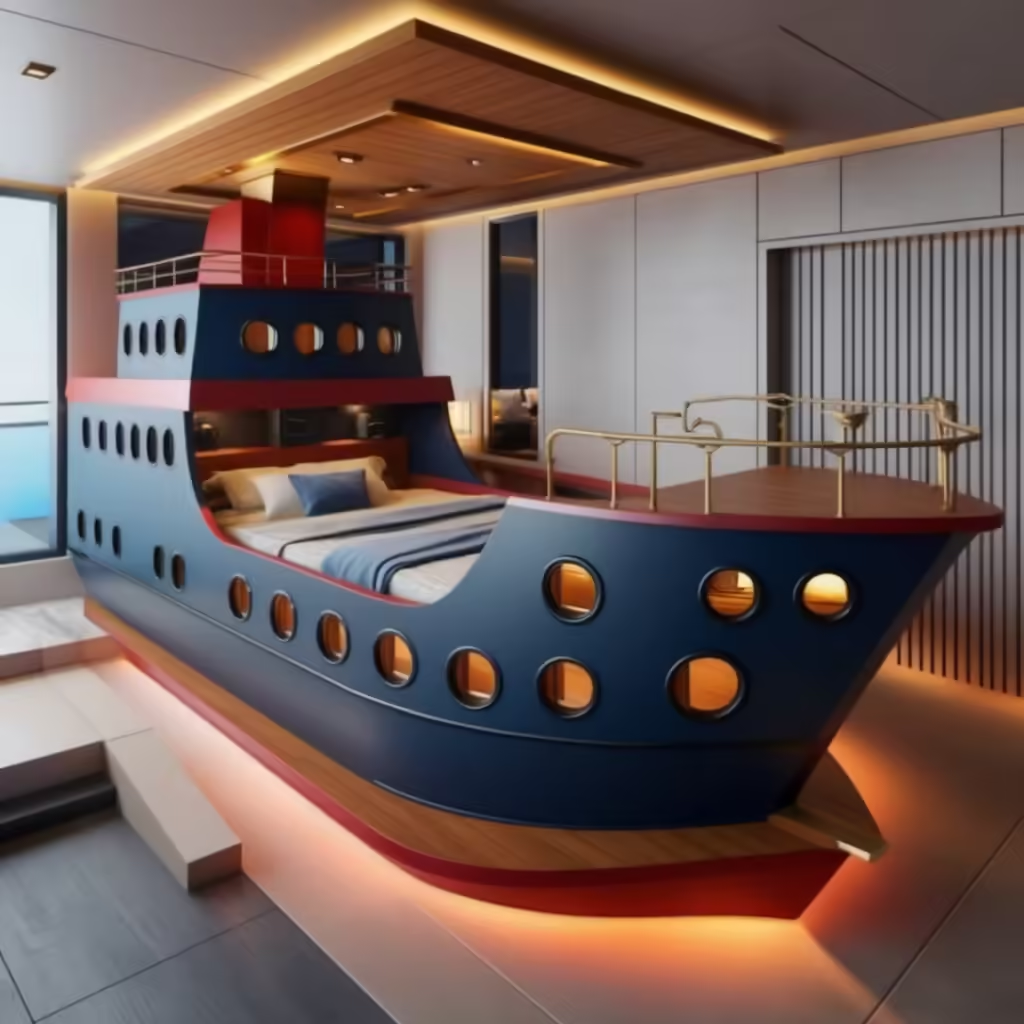
With sustainability emerging as a top priority in all industries, the maritime sector is no exception. Cargo ship bed manufacturers are increasingly turning to eco-friendly materials that reduce environmental impact while maintaining performance.
Exploring biodegradable composites or recycled materials not only meets regulatory standards but also appeals to environmentally-conscious consumers. This trend reflects a broader commitment to responsible shipping practices that prioritize planetary health.
Modular Bed Systems
Modular bed systems represent an innovative solution for adapting cargo beds to diverse shipping needs. These interchangeable components allow operators to configure beds according to specific cargo requirements easily.
By embracing modularity, shipping companies gain the ability to respond rapidly to evolving industry demands, enhancing operational agility and reducing long-term costs.
Regulatory Standards Governing Cargo Ship Beds
The shipping industry operates under a framework of regulations designed to safeguard participants and goods alike. Understanding these standards is essential for ensuring compliance and maintaining safety.
International Maritime Organization (IMO) Guidelines
The International Maritime Organization (IMO) sets forth guidelines that influence cargo ship bed design and operation globally. These guidelines encompass safety standards, environmental protection measures, and recommendations for best practices.
Compliance with IMO regulations is mandatory for shipping companies, as violations can result in severe penalties, operational setbacks, and reputational harm. Embracing these guidelines ensures the safety of both crews and cargoes during transit.
National Safety Standards
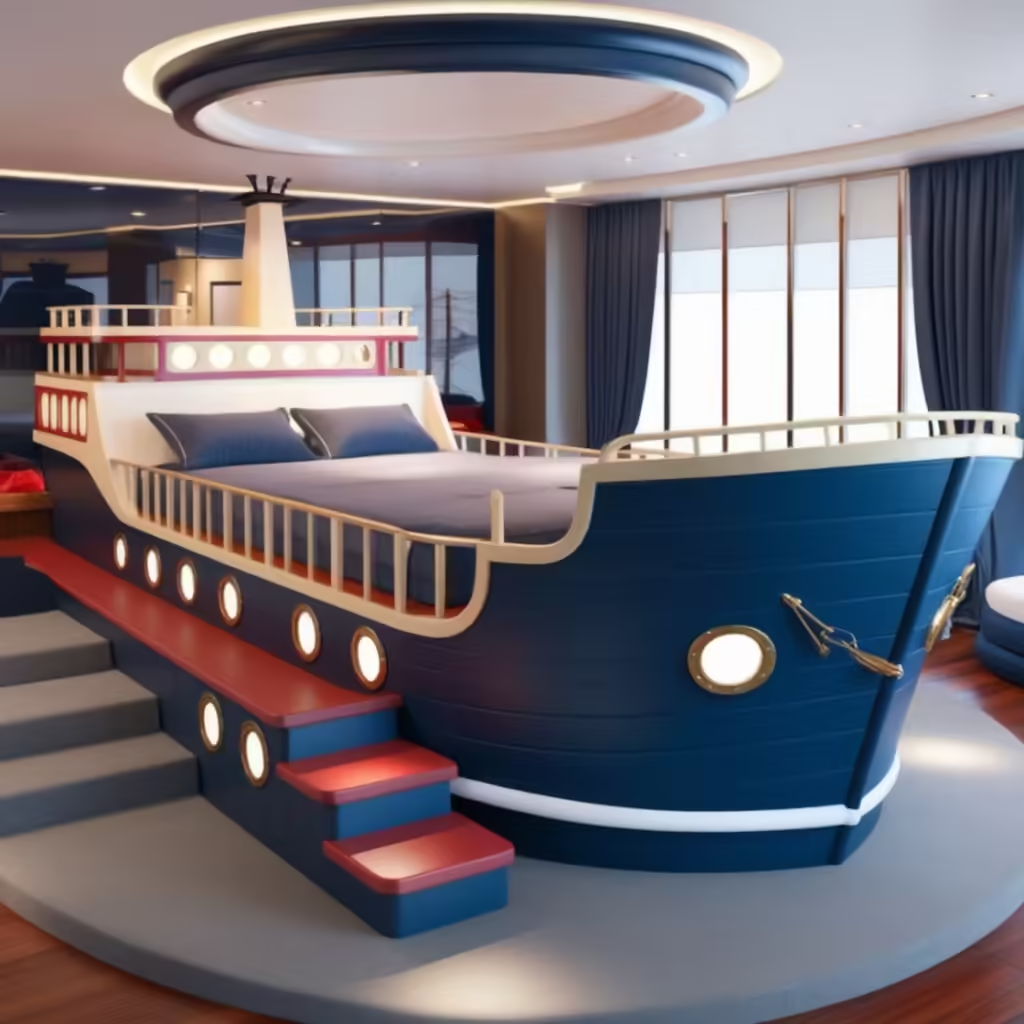
In addition to international regulations, individual nations impose their own safety standards that govern cargo ship operations. These national regulations may vary based on local conditions, legal frameworks, and cultural considerations.
Shipping companies must navigate this complex landscape by ensuring that their cargo bed designs and practices align with national codes while adhering to international standards.
Compliance and Inspection Procedures
Routine inspections are critical for maintaining compliance with established regulations. Thorough evaluations of cargo bed designs and operations reveal potential issues that could hinder safety or violate standards.
Shipping companies should implement robust inspection protocols to ensure ongoing compliance, fostering an organizational culture that prioritizes safety and accountability.
Challenges Faced by Cargo Ship Beds
While cargo ship beds serve critical functions, they also face various challenges that can impact their performance and reliability. Navigating these obstacles is crucial for continuous improvement in maritime operations.
Weather Resistance and Corrosion Issues
Cargo ship beds are constantly exposed to harsh weather conditions, including saltwater and extreme temperatures. These elements can lead to corrosion and degradation over time, jeopardizing the integrity of the bed.
Implementing protective coatings and selecting corrosion-resistant materials can combat these issues effectively, prolonging the lifespan of cargo ship beds.
Weight Limitations and Engineering Constraints
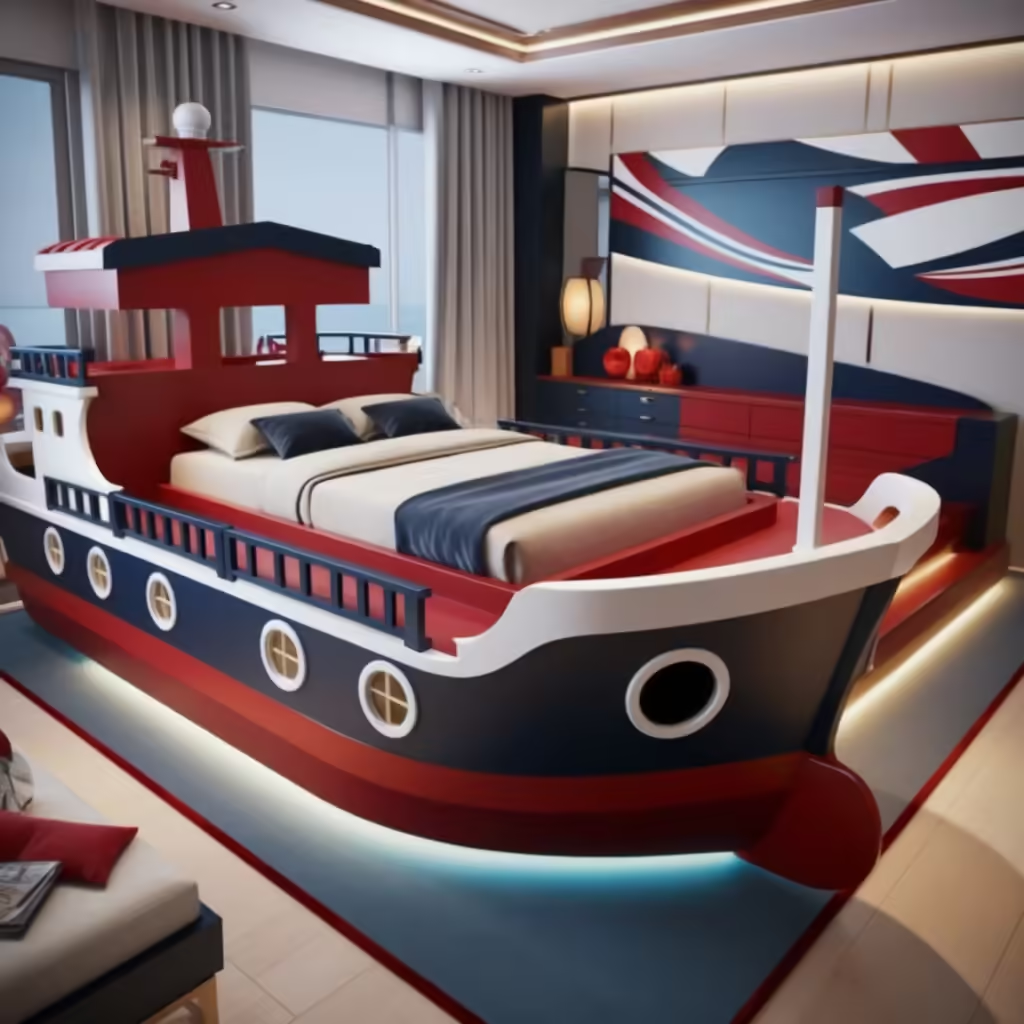
Engineering constraints often dictate the maximum weight a cargo bed can support. Striking a balance between strength and weight capacity is an ongoing challenge in the design process.
Innovative engineering solutions focus on optimizing materials and structures to achieve maximum load-bearing capacity without exceeding weight limitations, ultimately ensuring safety and efficiency.
Cost Implications for Ship Owners
Investing in high-quality cargo ship beds comes with significant upfront costs. While the promise of enhanced efficiency and reduced maintenance expenses exists, ship owners must carefully consider budgetary implications when selecting cargo bed systems.
Conducting comprehensive lifecycle cost analyses can guide decision-making, helping operators weigh long-term benefits against immediate expenditures.
Best Practices for Maintaining Cargo Ship Beds
To ensure cargo ship beds remain reliable and effective, shipping companies must adhere to best practices for maintenance and upkeep. Consistent care is essential for preserving functionality and durability.
Regular Inspections and Repairs
Conducting regular inspections is vital for identifying wear and tear on cargo ship beds. Scheduling assessments at predetermined intervals enables companies to proactively address potential issues.
From evaluating fastenings to checking for structural integrity, a thorough inspection regimen empowers shipping operators to ensure that their cargo bed systems remain safe and functional.
Cleaning and Preservation Techniques
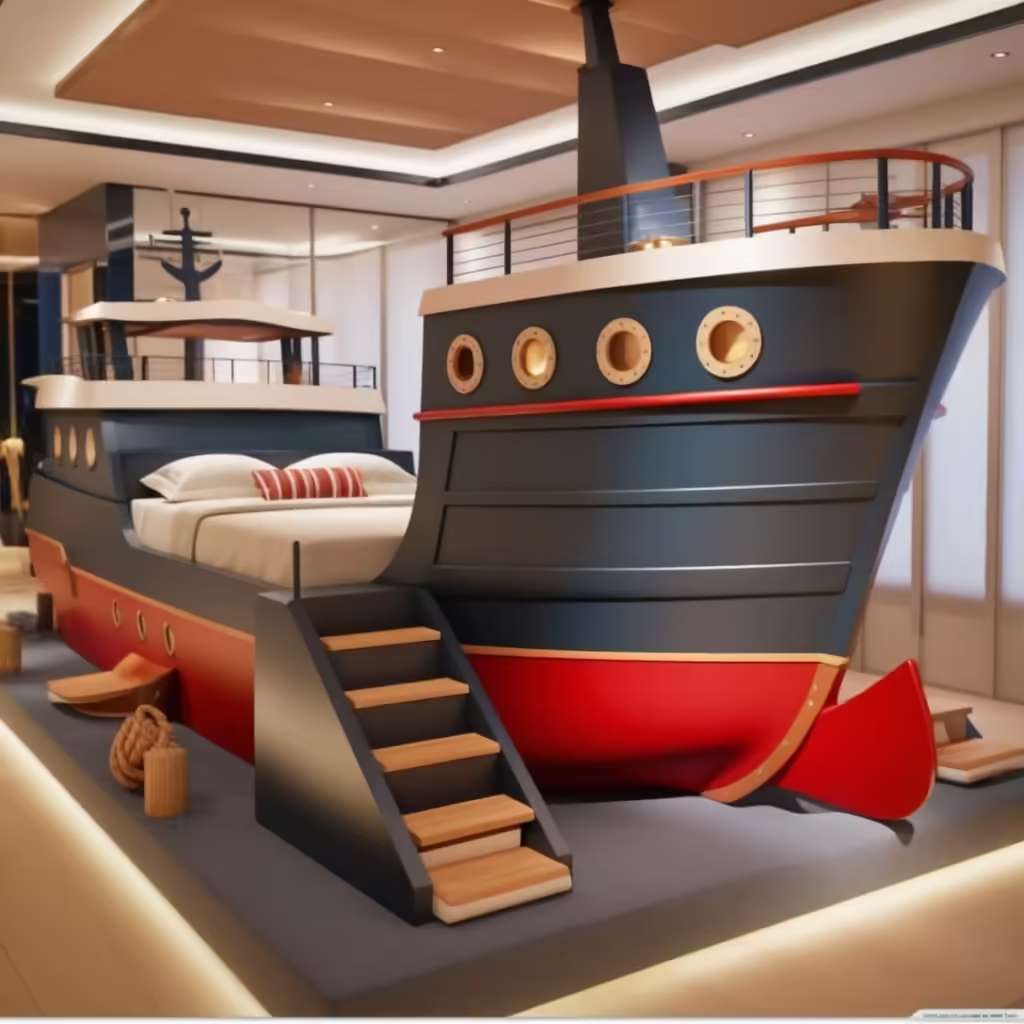
Keeping cargo ship beds clean is crucial for preventing the buildup of corrosive materials that can compromise their structural integrity. Implementing cleaning protocols ensures that beds remain free of salt, dirt, and other contaminants.
Using appropriate cleaning agents and techniques will preserve the quality of the materials, prolonging the lifespan of cargo beds and safeguarding investments.
Upgrading and Retrofitting Older Beds
Over time, older cargo ship beds may fall short of modern safety and efficiency standards. Investing in upgrades and retrofitting existing beds can bring outdated systems up to speed with contemporary regulations and technology.
This practice not only enhances the reliability of older beds but also maximizes their operational value, allowing companies to adapt to evolving shipping demands without incurring substantial replacement costs.
Case Studies of Effective Cargo Ship Bed Use
Real-world examples highlight how effective cargo ship bed designs can impact shipping efficiency and operational success. Exploring case studies offers valuable insights into best practices and innovative solutions.
Example from the Container Shipping Industry
In the container shipping sector, the use of standardized cargo bed designs has revolutionized the industry. The implementation of intermodal containers allows for seamless transport across land and sea.
Integrating modular cargo beds specifically designed for containers enhances loading and unloading efficiency while minimizing the risk of damage. Lessons learned from this model underline the importance of standardization in achieving global shipping efficiency.
Lessons Learned from Bulk Carriers
Bulk carriers present unique challenges related to cargo weight stabilization and securing irregular loads. By adopting specially designed cargo ship beds that address these complexities, operators can minimize the risk of cargo movement during transit.
Studying effective implementations has led to improved practices in securing bulk materials, ultimately improving shipping safety and efficiency.
Innovative Solutions in Specialized Shipping
Specialized shipping—such as transporting oversized machinery or fragile goods—demands tailored cargo bed solutions that ensure proper handling. Innovation has fueled the development of adaptive cargo beds equipped with shock-absorbing features, custom attachments, and innovative fastening systems.
These creative approaches have enabled companies to extend their service offerings while maintaining cargo integrity and safety.
The Future of Cargo Ship Beds
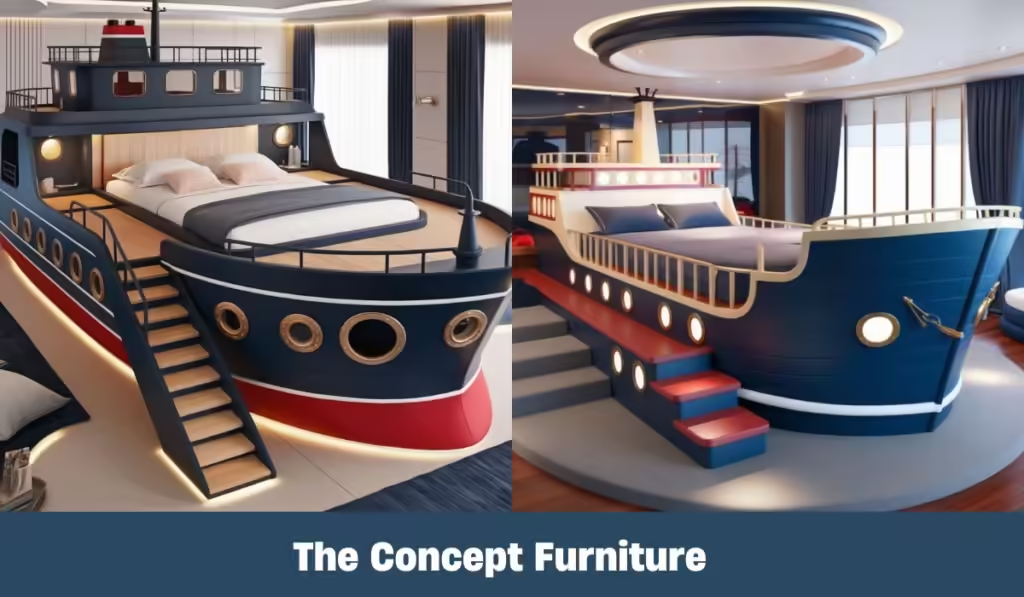
Looking ahead, the future of cargo ship beds is filled with potential for transformation driven by technological advancements, sustainability efforts, and evolving market demands.
Trends in Maritime Logistics
The logistics landscape is continually shifting, with new trends redefining how shipping operations function. Increasing emphasis on automation, data-driven decision-making, and real-time tracking will inevitably change cargo bed designs to incorporate smart technologies.
Adapting to these trends will empower shipping companies to enhance efficiency and provide improved services in an increasingly competitive market.
Potential Technological Advancements
Emerging technologies such as artificial intelligence, augmented reality, and robotics hold the potential to revolutionize cargo ship bed systems. These advancements could enable predictive maintenance, automated loading processes, and streamlined design practices.
By leveraging technology, shipping companies can enhance operational efficiency while minimizing human error, ultimately improving safety standards.
The Impact of Sustainability on Design Choices
Sustainability will continue to shape the future of cargo ship bed design. As regulatory pressures increase regarding environmental impact, companies must prioritize eco-friendly materials and practices.
Emphasizing sustainable design choices not only aligns with industry trends but also caters to a growing consumer preference for environmentally responsible shipping solutions.
Conclusion
In conclusion, cargo ship beds are far more than simple platforms for transporting goods; they represent a critical element in the intricate machinery of maritime operations. From their varied designs and materials to their profound impact on shipping efficiency, cargo ship beds embody the evolution of the maritime industry.
As we look toward the future, continued innovation and adherence to safety and sustainability standards will undoubtedly shape the next generation of cargo ship beds. With ongoing advancements, the role of these essential structures will become even more pivotal in meeting the demands of global trade in an ever-changing world.


